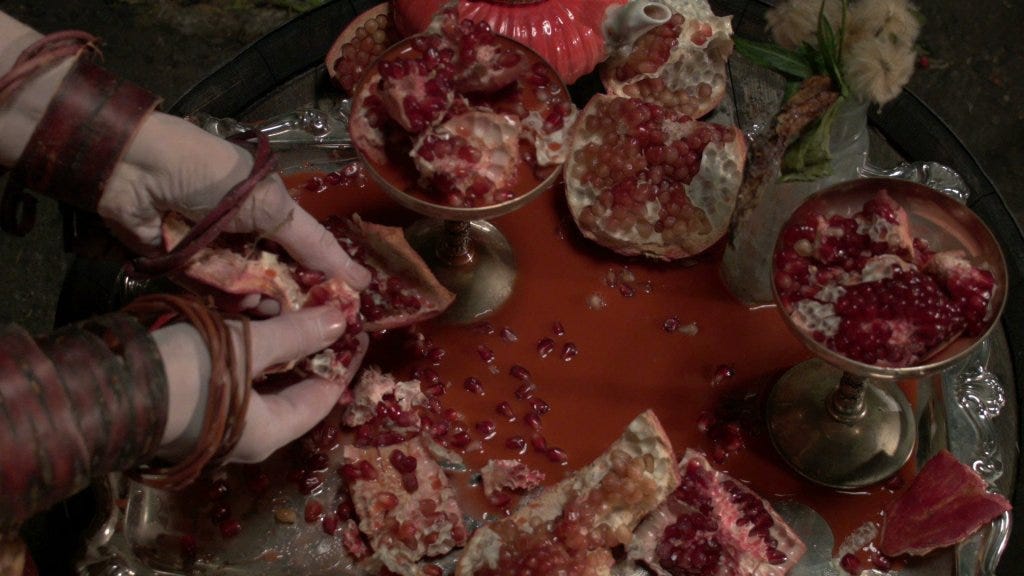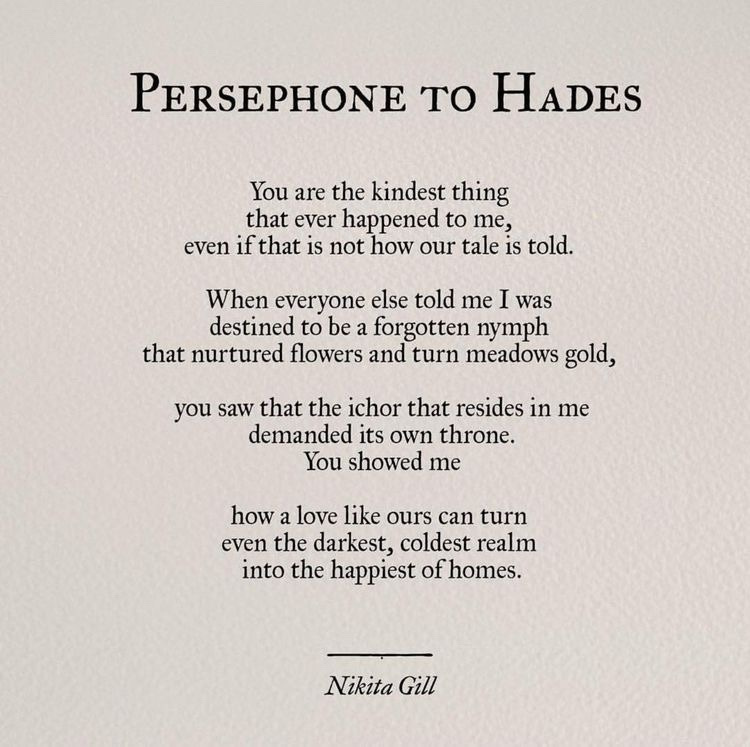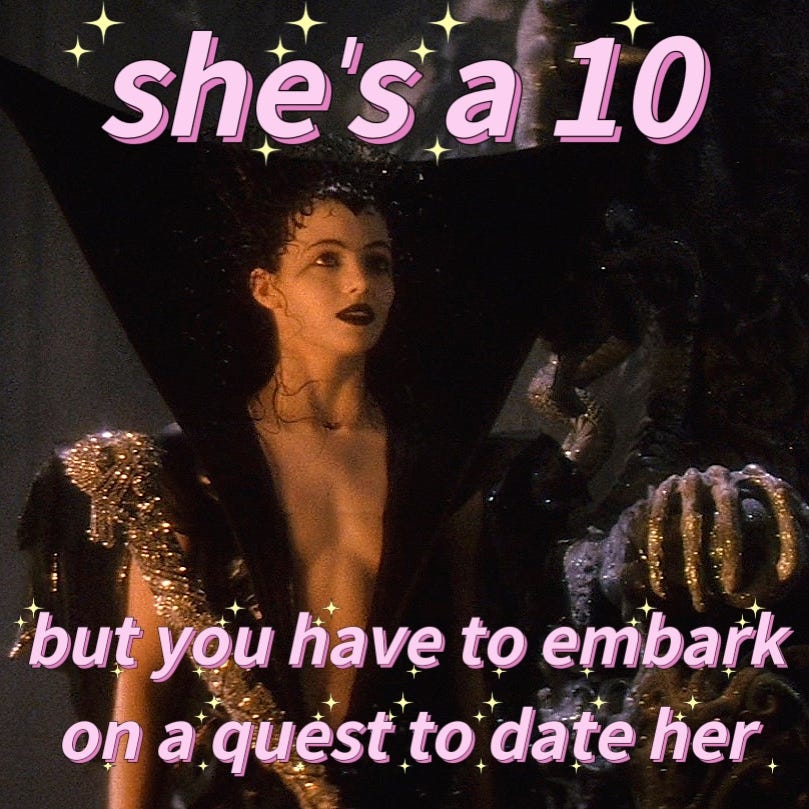TW: this article mentions sexual assault, human trafficking and violence
When Zeus secretly allowed the abduction of his daughter Persephone, snatched from a flower field and dragged to the depths of the Underworld, Earth-Mother Demeter scoured the lands in agony, leaving crops without nourishment, withering to famine. Realizing the err of this nefarious arrangement, Zeus demanded Persephone’s return, but the Dark Prince Hades had already concocted his own plot. Offering a pomegranate, the Early World fruit of fertility, Persephone savored 6 juicy blood-red seeds and became bound as Hades’ consort for 6 months of every year. For the remainder, she would rejoin her Mother in the lush fields, caressed by the bright skies once again.
Thus, the Legend of the Seasons were spun, the Equinoxes perfectly balanced before diving into cool or warm weather until the cycle began again.
Northern Hemisphere’s Autumn Equinox coincides closely with Libra’s start and Persephone’s back-and-forth between realms relates strongly to both the Seasons and the Scales.
The Roman mythological Proserpina also shares the name of Libera and served as a “mother-daughter” symbol with agricultural goddess Ceres (Liberalia, a fertility festival, nears Spring Equinox, sharing similarity with Ostara). Libra is strongly connected to Lady Justice and Persephone’s tale goes beyond Spring-Summer vs. Autumn-Winter duality. Persephone was a victim who plotted carefully to pull her power back, using the Libra modality in a battle of survival:
“Cardinal signs initiate new beginnings and turn the wheel of the Seasons. Cardinal Libra uses her intellect to move with precision, like a sword cutting the air.”
Prior to Libra is Virgo: the Virgin, the Earth Maiden, frolicking in the flower fields, just as Persephone was doing before her abduction. After Libra is Scorpio: the Scorpion shielded from the light, a descent into the darkness and the depths of psyche, the Queen of the Underworld. In between, Libra is the tale that connects the seeming opposite personas to her journey of transformation.
For centuries, Persephone’s plight has been presented thru differing interpretations of the ancient etiological myth. An attraction to a dark side or simply embracing the breadth of her sexuality are frequent themes in adult storytelling. Insinuating that the marriage contract meant a woman must leave part of herself behind when “crossing over” versus the kid-friendly version of a mother without her sunshine, the indulgence of the pomegranate willingly dared so Persephone could be her own person, freeing herself from parental obedience, are all valid.
Scholars argue if she suffered sexual assault, yet the fact that Persephone was forcibly abducted, rings the loudest. Rape or Romance? questions certain re-tellings as tomes of empowerment, including a critique of Goddess-centric Nikita Gill’s flowery poem.
In Femme Moon’s Symposium II, Of Persephone front fae-person Sarah Rae had a love-centric interpretation with illustration by Justin Coehlo:
As innocent or grim as the real life wheel of experience, one thread remains: The Duality of Light and Dark is one that belongs best to Persephone. She is able to transverse both realms, embodying two worlds. She is the Balance and also the Polarity.
My first glimpse into the Persephone archetype was Ridley Scott’s Legend, a fantasy film of epic proportions that deeply affected my creative psyche as a child. Released just 3 years after Blade Runner, Ridley Scott is often noted for his sci-fi ventures (the Alien series) or violent historical dramas (Gladiator, Blackhawk Down). Legend, however, is a dreamy, almost frothy fairytale that pulls from cottage-ladden intricacies, jolly fae folklore, and of course, unicorns. The juxtaposition between the floral green of the frolic-inducing forest and the death and danger of the dark realm press on classic Good and Evil. Lilly (played by Mia Sara) seems to drift between the pure and the corrupt, blurring lines through her appetite of beautiful things.
Defying boundaries re: sacred animals, seduced by jewels and dancing, playing frivolous games so Jack will prove his love, Lilly’s glimmering eye for flirting and folly is traditional femme Libra energy. Her easy distraction carries a burden of guilt, though she utilizes her fickle character strategically. Lilly transforms from damsel to heroine, helping to restore the balance of the sun-kissed lands against the hellish underworld.
Inspired by Jean Cocteau’s Beauty and the Beast, Ridley Scott’s Legend was Murda Hill’s featured Femme Film Astro Archetype for Libra Season 2022. Though there is a proper theatrical score for the Director’s Cut, I unabashedly prefer the U.S. version, released a year later with soundtrack by Tangerine Dream (this trippy version is not as widely available but can be watched in full on YouTube).










